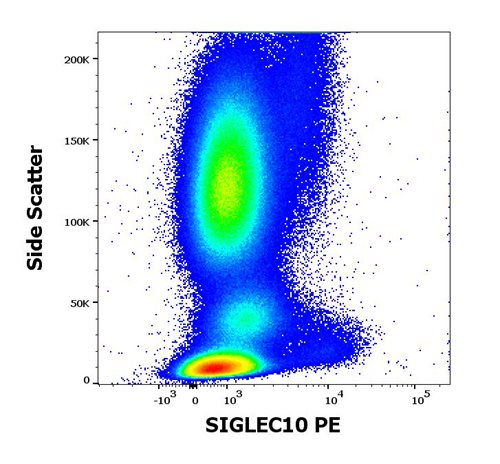Recombinant Human a-Crystallin A Chain/CRYAA (C-6His)
Shipping Info:
For estimated delivery dates, please contact us at [email protected]
| Amount : | 50 µg |
| Content : | Lyophilized from a 0.2 µm filtered solution of PBS, 2mM EDTA, pH 8.0. |
| Storage condition : | Lyophilized protein should be stored at -20°C, though stable at room temperature for 3 weeks. Reconstituted protein solution can be stored at 4-7°C for 2-7 days. Aliquots of reconstituted samples are stable at -20°C for 3 months. |
| AA sequence : | MDVTIQHPWFKRTLGPFYPSRLFDQFFGEGLFEYDLLPFLSSTISPYYRQSLFRTVLDSGISEVRSDRDKFVIFLDVKHFSPEDLTVKVQDDFVEIHGKHNERQDDHGYISREFHRRYRLPSNVDQSALSCSLSADGMLTFCGPKIQTGLDATHAERAIPVSREEKPTSAPSSLEHHHHHH |
Source: E. coli.
MW :20.9kD.
Recombinant Human alpha-Crystallin A Chain is produced by our E.coli expression system and the target gene encoding Met1-Ser173 is expressed with a 6His tag at the C-terminus. Alpha-Crystallin A Chain (CRYAA) belongs to the small heat shock protein (HSP20) family and can be induced by heat shock. The expression of CRYAA is preferentially restricted to the lens cell. CRYAA may contribute to the transparency and refractive index of the lens. CRYAA has chaperone-like activity, preventing aggregation of various proteins under a wide range of stress conditions. Two additional functions of CRYAA are an autokinase activity and participation in the intracellular architecture.
MW :20.9kD.
Recombinant Human alpha-Crystallin A Chain is produced by our E.coli expression system and the target gene encoding Met1-Ser173 is expressed with a 6His tag at the C-terminus. Alpha-Crystallin A Chain (CRYAA) belongs to the small heat shock protein (HSP20) family and can be induced by heat shock. The expression of CRYAA is preferentially restricted to the lens cell. CRYAA may contribute to the transparency and refractive index of the lens. CRYAA has chaperone-like activity, preventing aggregation of various proteins under a wide range of stress conditions. Two additional functions of CRYAA are an autokinase activity and participation in the intracellular architecture.
Always centrifuge tubes before opening. Do not mix by vortex or pipetting. It is not recommended to reconstitute to a concentration less than 100 µg/ml. Dissolve the lyophilized protein in ddH2O. Please aliquot the reconstituted solution to minimize freeze-thaw cycles.
Endotoxin : Less than 0.1 ng/µg (1 IEU/µg) as determined by LAL test.
For Research Use Only. Not for use in diagnostic/therapeutics procedures.
| Subcellular location: | Cytoplasm, Nucleus |
| Post transnational modification: | Undergoes age-dependent proteolytical cleavage at the C-terminus. Alpha-crystallin A(1-172) is the most predominant form produced most rapidly during the first 12 years of age and after this age is present in approximately 50% of the lens molecules. |
| Tissue Specificity: | Expressed in eye lens. |
| BioGrid: | 107799. 68 interactions. |
|
There are currently no product reviews
|

















.png)









